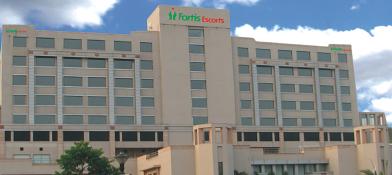Mammogram
Overview
A mammogram is an X-ray image of the breast done in women to check the presence of breast cancer. This can be used to screen or diagnose breast cancer. They use X-ray images, which help to identify when there are no signs of diseases or when symptoms like growths or lumps are identified in the breast.
Breast cancer is one of the most common types of cancer affecting females worldwide. Early diagnosis of breast cancer by screening or diagnosing has reduced deaths due to breast cancer and increased the survival rates in women. Low-dose X-rays are used to produce images that can be used to identify any signs of breast cancer which is not visible to the naked eye.
Types of Mammograms
Mammograms are of two main types based on their purpose. They are Screening mammograms and Diagnostic mammograms.
- Screening Mammogram: These produce two or more X-ray images to detect signs or calcifications with no symptoms. These require relatively less X-ray dose and take less time.
- Diagnostic Mammograms: These produce more X-ray images and are used when symptoms have developed. The symptoms include growth or lump in the breast tissue, pain in the breast, nipple discharge, and changes in the size or shape of the breast. It uses more X-ray doses and takes more time. It can also detect changes undetected by a screening mammogram.
Based on the dimensional images, a mammogram is again of two types. 2D mammogram and 3D mammogram.
- 2D mammogram creates 2-dimensional images of the breast. Traditional mammograms are all 2D mammograms.
- 3D mammogram creates 3-dimensional images of the breast. This is also called digital breast tomosynthesis, which produces thin slices of breast images from different angles. The slices of images are reconstructed using computer software.
Indications of Mammograms
Mammograms detect abnormalities in the breast tissues. They are used to detect any changes occurring before symptoms develop. They also detect growths/lumps, calcifications, asymmetries, and distortions in the breast tissues.
Benefits of Mammograms
These have the advantage of detecting the changes early, which helps in the early management of breast abnormalities, leading to increased survival rates and quality of life. Mammograms use low-dose radiation, making them safe for screening and diagnosis. Screening mammograms can be started as early as 40 years of age.
Before Mammogram
Before a mammogram, an individual should inform the healthcare professional of the patient's previous history. Any previous breast abnormalities, treatments done to breast tissue, medications used in the past, and prior mammograms should be informed. One should also be informed about the presence of breast implants before taking a mammogram. It is better to schedule a mammogram during the week after the menstrual cycle, considering the tenderness of the breast due to hormones. It is better to avoid powders, lotions, creams, or perfumes as their metal particles can interfere with the images. Avoid wearing jewellery that can interfere with images.
During the Mammography
A mammogram is designed to produce images of the breast tissue using a lower dose of X-rays than other body parts. Breast tissue is placed between 2 plates on a platform. The platform is adjusted as per the height of the individual. Breast tissue is compressed or flattened between the two plates to even out the tissue. This gives a better-quality image of the breast tissue. X-ray images are taken of both the breasts.
After the Mammogram
After checking the quality of the images, an individual is sent. The entire procedure lasts for about half an hour. One can resume their daily activities. The X-ray images are later analyzed by a radiologist and sent to the referring healthcare professional.
Interpretation of the Results
A radiologist analyses and interprets the results based on the black-and-white images produced. Radiologists use Breast Imaging reporting and database System (BI-RADS) scores to describe the mammography findings. Each score has a follow-up plan for a screening mammogram or a biopsy. The scoring is done based on the presence of abnormal tissue.
Risks and Limitations of Mammograms
A mammogram can only detect the presence of abnormality or detect the presence of cancer but cannot diagnose the exact type of cancer. There can be false positive results or false negative results.
The false positive result obtained in a mammogram can only be confirmed by additional tests like imaging and biopsy. These can cause unnecessary distress in women who may not require them. They can be costly, stressful, and time-consuming. Younger women with dense breasts tend to have more false positive results.
The false-negative results indicate that the mammogram detected no abnormality despite the presence of an abnormality. Screening mammograms can miss about 20% of breast cancers during screening. They can also delay the treatment when necessary. False negatives are primarily seen in women with dense breasts.
Sometimes, certain conditions can be over diagnosed, leading to unnecessary treatments. Screening mammograms may not identify all the cancers that can be detected by physical examination. This could be due to the presence of growths in areas where mammography does not reach.
Sometimes, aggressive cancers detected on mammograms cannot be cured due to their spread to other regions or due to other life-threatening conditions.
Conclusion
Mammograms play a vital role in the early detection of breast cancer. They can be used for screening and detecting cancers. They significantly impact survival rates and quality of life for women worldwide. Mammograms are a vital tool in fighting breast cancer when used with other screening methods and clinical assessments.



















